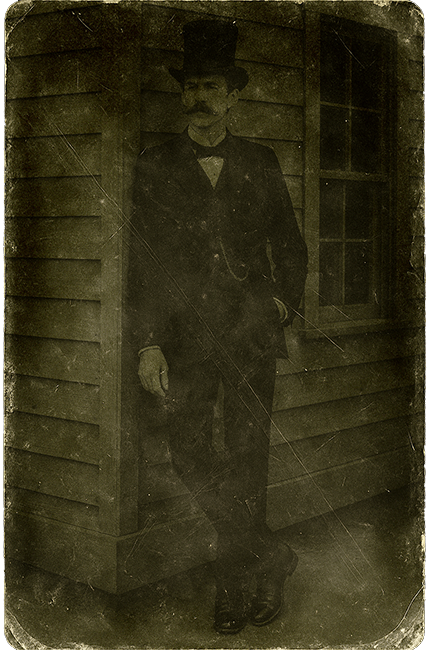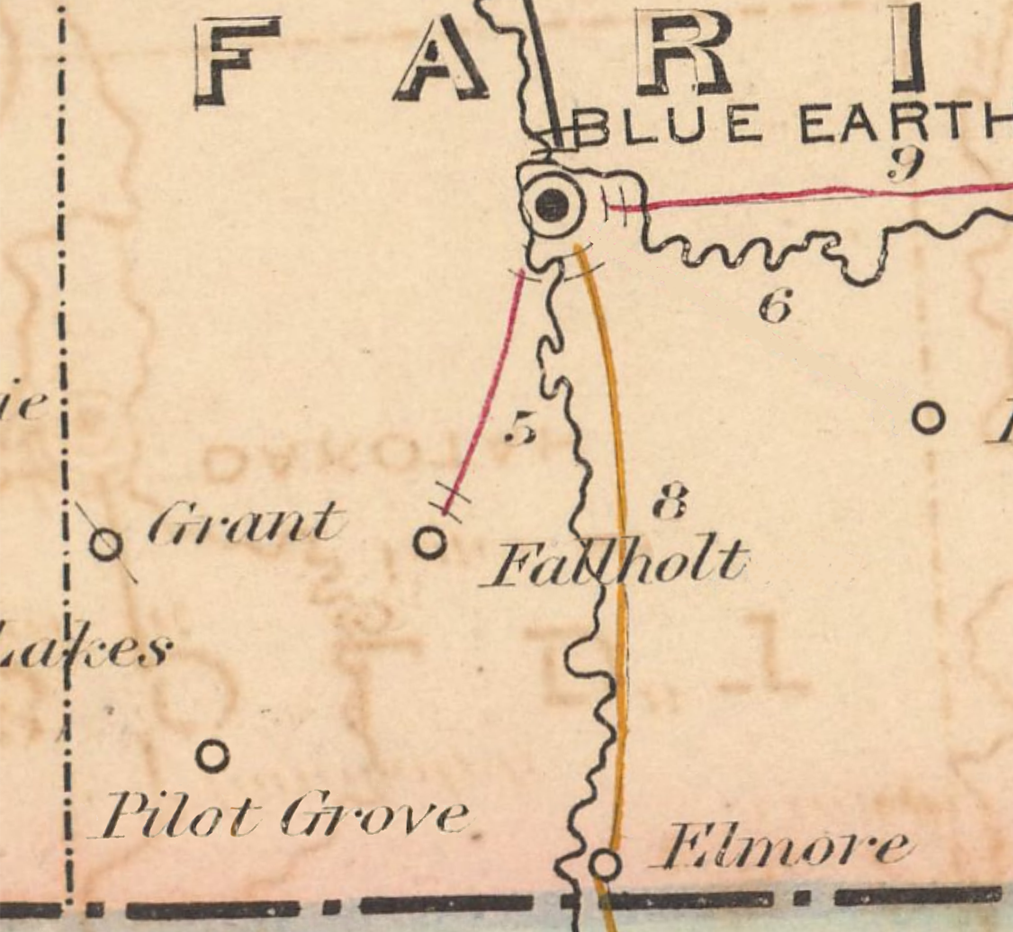
|
|
Dr. Xavier Holt, founder of Terra Nova. |
Progress was slowly making its way in from above. The U.S. Roc Line Railroad had already announced plans to extend their rail service to the area from the north with a rail depot in Blue Earth scheduled to open in 1887, extending the route southward with a station in Elmore soon after, and on into Iowa.
In 1875, Dr. Holt met privately with the Railroad in their Saint Paul offices to present a proposal for a spur track constructed a mile south of the Blue Earth station south-west to Fallholt at the same time as the main rail line would proceed south toward Elmore as planned. Holt offered to personally finance the full amount of the cost for materials and labor for this proposed four-mile spur track, knowing the economic benefits of connecting his fledgling town to the rail system would pay dividends.
Blue Earth’s politicians, still smarting from the Easter Exodus and eager to avenge this, foiled these efforts in cooperation with officials of the Railroad, many of whom were known to cavort in the same circles and darkened back rooms. The U.S. Roc Line Railroad refused to endorse Holt’s proposal, and further stated that if Holt were to proceed in building this spur track, they would deny train service to it and could easily convince competing Rail Companies to do the same. Holt could not justify the expense of this great endeavor if there would be no rail traffic, nor did he have the appetite for the legal battle that would ensue, so with no recourse or immediate solutions he withdrew his proposal.
For Holt, not having the railway running through their new town was a significant personal letdown, and this political “return volley” only added to the simmering acrimony between the two towns.

|
|
Original draw-up of Holt's plans for a spur track connecting Blue Earth to Fallholt. |
In the spring of 1877, Holt, denied by the U.S. Roc Line Railroad, planned an exclusive private passenger and freight rail from Fallholt five miles in length southwest to Pilot Grove, in the complete opposite direction of Blue Earth. It would not connect to the main rail line that was already being built, merely a short stretch of track between two small towns. This was an attempt driven partially by Holt’s personal desire to construct a rail system that he had become fully taken in with to the point of obsession– even more so after being rebuffed by the Railroad in 1875. It was called Dr. Holt’s Short Line Railroad Company.
With many friendships forged by visits north to the Cities from traveling corn farmer Gellar Svensson, surveyors, stonemasons, craftsmen and laborers numbering in the dozens signed contracts to come to Fallholt in September of 1877, and construction began on the straight stretch of rail heading south-west toward a proposed new rail depot in Pilot Grove, the terminus of this short line, which was also being built at Holt’s expense.
Pilot Grove’s citizens– many who still remained very curious about the reclusive tiny eight-year-old town that was nestled in its own northeast corner– were enthusiastic about the idea of a train coming to their town, even if it was just a small five-mile rail from one point to another, and Holt’s hope was that this new rail could do much to bring these towns together, kicking off a healthy commercial trade in Pilot Grove, a town founded in 1856 but one that was stagnant in growth.
The track itself was completed within six months, and on March 12, 1878, a Holt-financed set of cars and a splendid new steam engine took the maiden excursion from Fallholt Station, carrying 80 passengers and cargo consisting of corn, wheat, furs, and a great many other goods.
The excited denizens of Pilot Grove witnessed Dr. Holt’s Short Line Railroad Company arrive, driven by Xavier Holt himself with his steam engine, three passenger cars, three cargo box cars, and a caboose on the initial voyage.
Once service became regular in May of 1878, the train to and from Fallholt and Pilot Grove ran three times daily (morning, afternoon and evening), a one-way passenger fare cost ten cents, and a round-trip fare cost fifteen cents.